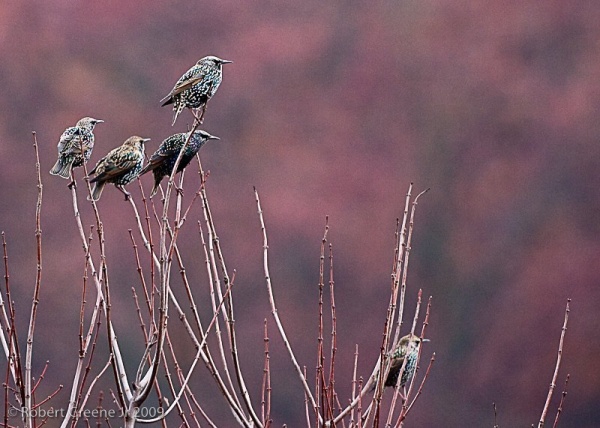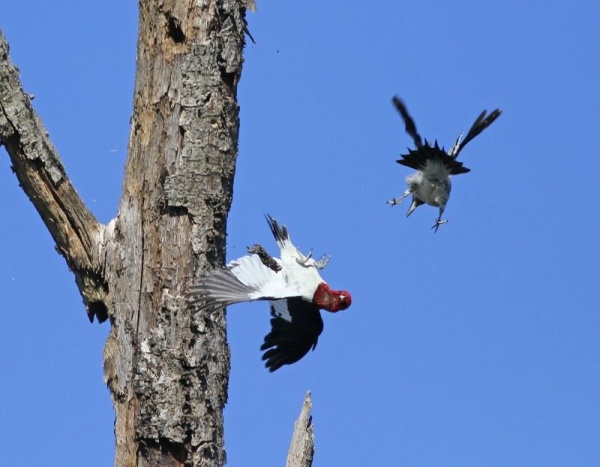
2 October 2013
Watch out!
Last week Chris Saladin captured these action shots of two red-headed woodpeckers in a protracted fight at Sandy Ridge Reservation. The immature woodpecker, still clad in gray, seems to have the upper hand. What’s the deal here? Why are they fighting?
All woodpeckers chase to maintain their territories but red-headed woodpeckers take fighting to an extreme. During the breeding season they’re aggressive to everyone, especially the cavity-nesters. They persecute northern flickers, red-bellied and downy woodpeckers. If a starling dares to take a red-headed’s nest hole the woodpecker fights and wins. Even the pileated woodpecker defers to this bird.
Red-headed woodpeckers are especially aggressive toward each other and are solitary in winter because they fight so much. Each one establishes a winter territory where he gathers and stores acorns for his personal use. All other red-headeds — male, female and immature — must stay away!
Perhaps this immature woodpecker showed up on migration and hoped to claim the Sandy Ridge wetland. The adult is having none of it!
Above, he makes the bark fly as he bounces off the dead tree. Below, he’s quick to get out of the way as the immature zooms in!
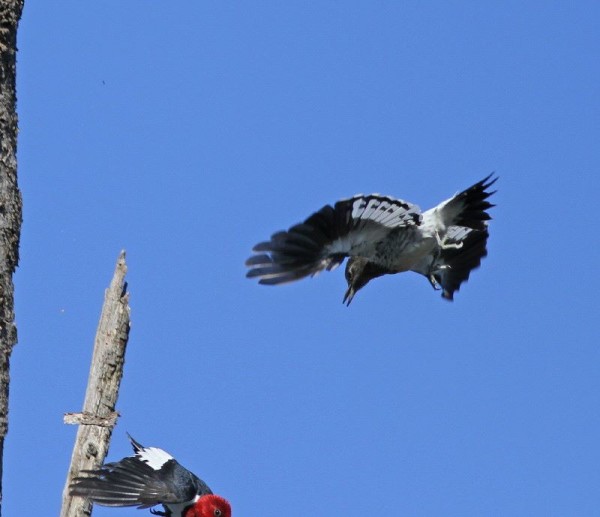
And here they’re airborne in foot-to-foot combat!
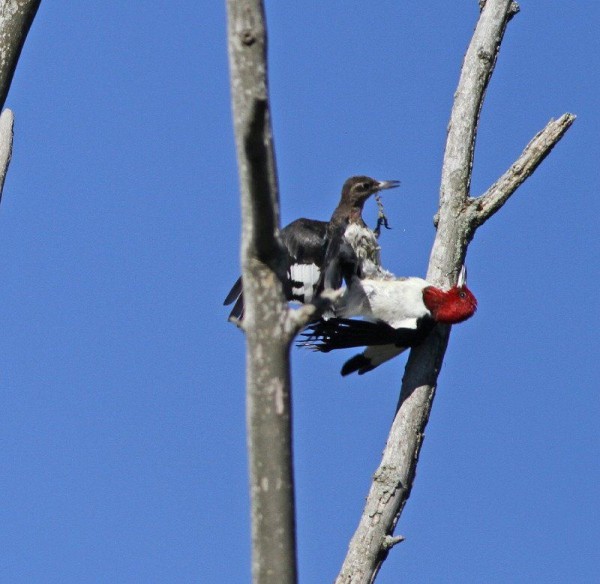
Apparently they can’t stand the sight of each other.
Finally the immature pauses so we can see him at rest.
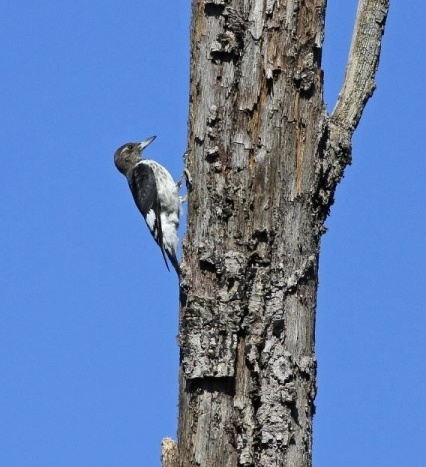
A most pugnacious species!
(photos by Chris Saladin)
p.s. Click here to see what an adult red-headed woodpecker looks like when he’s not in battle.
